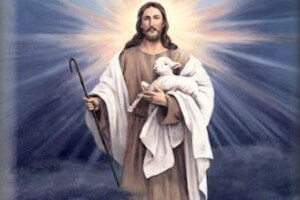An issue that has plagued the priesthood in the past, and has resurfaced in modern times, is that of marriage and priests. Should priests be allowed to marry? What in the history of the church supports a married clergy? What in history says that the church is solidly behind celibacy?
First of all, chastity and celibacy are two different things. All vocations require the virtue of chastity. Whether single, married, or religious, sexual license and misconduct have no place in God’s Kingdom. Only in marriage is sexual intercourse for purposes of union and procreation permitted and still chastity applies to both partners. Celibacy applies to the rule and discipline of the Church that says that a religious must not be married. Jesus was not married. It is thought that some of the apostles were. The question arises--is there anything in the history of the Catholic Church to show that the Church supported celibacy? Where did celibacy originate in the Catholic Church?
The fact of the matter is that since the time of Christ and the early Church, the motivation and teaching of the Church was that celibacy is an apostolic institution. It did not just come in time later in the 4th century or the 12th century, but it was there biblically and within the Church from the beginning. However, this is where the rub comes in. The clergy on the whole did not listen to what the Church was saying. Only later would the Church have to make laws about priestly celibacy. The clergy continued to marry. St. Paul stated in letters to Timothy and Titus in the New Testament that the fruits of disobedience to a celibate clergy were disruption and disorder. It is true that the people suffered much too.
So, celibacy linked to the priesthood was first revealed in Christ. The freedom to be an effective minister, totally committed to the needs of the people with no encumbrances due to marriage and parenthood, was the thinking of the Christ and the Church when a priest was celibate. Christ called his apostles and they left everything and followed him. It was a radical departure from their former lives. Jesus said—“There is no one who has left house or wife or brothers or parents or children, for the sake of the kingdom of God, who will not get back very much more in this age, and in the age to come.” (Luke 19:29)
During the 3rd and 4th centuries, no law existed that prohibited clerical marriage. It seemed to be that bishops, priests, and deacons made their own choices as to whether they were married or not. In the early Church, marriage could occur before ordination, but not after it. When did the Church make laws in regard to priestly celibacy? It came to the point where the Church had to act strictly. The Council of Elvira in 305 A.D. is the earliest record regarding priestly celibacy. Canon 33 forbade all married bishops, priests, and deacons from having sexual relations with their wives and begetting children. This council stated openly that the clergy who were married were bound by a vow of perpetual continence, meaning no sexual relations with one’s wife. No woman was to be kept in the clergy’s living quarters, with the exception of a mother or sister or aunt, or a person who was above suspicion, meaning only a wife of clergy who had taken vows of continence before the husband was ordained. The Church was saying that even though the clergy were married that they should abstain from sexual relations.
There were married clergy who tried to defend their conjugal lifestyle. Pope Siricius proclaimed that “married only once”, as found in Tim 3:2 does not mean that after their ordination married clergy could continue conjugal relations with their wives. The meaning of this biblical passage was that a man faithful to one wife could be expected to be mature enough to live the perpetual continence required of him and his wife after his ordination. St. Ambrose, Epiphanius of Salamis, Ambrosiaster, Church Fathers supported Pope Siricius’s teachings. The Council of Carthage met with the African hierarchy in 390 A.D. They reiterated the rule of perpetual continence for all married clergy. However, what was proclaimed did not jive with the practices of the clergy. This council in northern Africa said that it was only repeating what the Church’s tradition was from the beginning.
In the 5th century, a Roman synod led by Pope Innocent I repeated this same teaching. St. Leo the Great, St. Gregory the Great, St. Jerome, St. Augustine, and St. Ambrose agreed. Practices again did not concur with what was decreed, even at the Council of Tours in 461, the Council of Genoa in 517, and the Council of Auvergne in 535. The Celtic churches in their penitential books stress the requirement of perpetual continence for married clergy. The Gregorian Reform dealt with violations of the rule of clerical celibacy in the 11th and 12th centuries.
Many think that the Second Lateran Council of 1139 instigated clerical celibacy. This council endeavored to enforce the apostolic ban on conjugal life for the clergy. Eastern Orthodox apologists speaking on mixed celibacy of priests, deacons, and bishops ignore these councils which upheld the apostolic tradition. The 1859 Sacred Congregation for the Doctrine of the faith stated that the first centuries of the Catholic Church history had no general or explicit law on celibacy for priests and clerical continence but they upheld it on tradition and custom. Virginity and perpetual continence were the norms.
Cardinal Ratzinger declared that priestly celibacy is an apostolic tradition. Benedict XVI states that “any attempt to separate priesthood from celibacy would deny the charismatic nature of priesthood. It would reduce it to an office completely under the control of the institution. Thus the Church in effect would be regarded as a purely human institution.”
As far as Protestant ministers being allowed to marry, statistics show that they have increased tensions. Being married does not help them in the way that Catholics would think. Protestant vocations are also on the decline. Their ministers have not been immune to problems in the line of sexual abuse.
The beauty of the Catholic clerical state is that the clergy mirrors the character of Jesus Christ, as celibates and as male priests. As celibates, they are free to serve the people unrestricted. Holy Orders is a sacrament that gives the priest special graces to live his life centered upon Jesus Christ, and his mission to others alone. The people are privileged to experience the magnificence of God’s servants in their state of purity, reserved to those ordained men who administer the Body and Blood of Jesus Christ. As male priests, they model their Savior in their lives of dedication. And they too, continue in the Tradition that the Catholic Church throughout the ages has passed on in apostolic succession to others.
This article was submitted for publication by a user of 4marks.com.
Publication of the article does not constitute an endorsement of the
specific opinions by 4marks.com.
This article can be reprinted by including the following credit:
This article is reprinted with written permission of 4marks Magazine
and is part of the 4marks.com network which offers a variety of online
services to Catholics, including our online Daily Catechism program,
Catholic Trivia, Temperament Test and single Catholic service. To learn
more about any of our services or how 4marks is helping Catholics
connect online in order to deepen their faith offline visit
www.4marks.com


